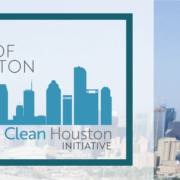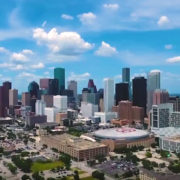HTX Pandemic Response Failure, Food Deserts Aren’t Real, NYC ‘s Anemic Recovery
Just a few items this week:
- Bloomberg Businessweek: Houston Had an All-American Pandemic Response: Ignore Until It’s Too Late – The city knows about disasters. It’s got a world-renowned medical center. It saw what happened in New York. And it still couldn’t stop Covid-19. I know I still shake my head every time I see a full pedal party in Midtown (close proximity + heavy breathing!). Hat tip George. Sad conclusion:
Crisis is brewing from every direction, and we’re as ready as we ever were. It’s as Hidalgo says: “We’re right on the edge of disaster. It’s almost become our way of business.”
- WSJ: Manhattan Offices Are Nearly Empty, Threatening New York City’s Recovery – About 1 in 10 office workers have returned since Covid-19 hit, far fewer than elsewhere, hurting local businesses. Excerpts and the top rated comment:
“But a number of civic and business leaders say New York’s reliance on mass transit—and concerns that the new coronavirus could spread through subways, buses or regional trains—has kept many people working from home. Cities that have more driving commuters have seen a higher percentage of workers return.”
“New Yorkers’ slow return to the workplace is the latest blow to the nation’s biggest city, which has also suffered from homeowners fleeing Manhattan for larger spaces, rises in murders and homelessness, and the shutting or partial closings of Broadway theaters, museums and other popular attractions.”
“But for some New Yorkers who recall the early weeks of the pandemic, when the rates of sickness and death were among the highest in the world, complimentary parking might not be enough to bring them back to midtown and the prospect of mixing with crowds. Many were traumatized, said Chris Jones, senior vice president of the Regional Plan Association, an urban policy organization.”
And here’s the top rated comment:
“Let’s be real. There is no social distancing in NYC whatsoever when the buildings and streets are full. Zero. None whatsoever. Source: a person who’s worked in NYC every day for 25 years. “
- U.S. Cities Most Reliant on Tourism. WTH?! How does Houston have more tourism workers than Vegas, Orlando, Tampa, New Orleans, Miami, or Austin+San Antonio combined?? Turns out restaurant workers serving locals – which is roughly proportional to population – really swamps out any tourism-specific employment.
- Stanford study says “food deserts” are not a real thing:
“We study the causes of “nutritional inequality”: why the wealthy tend to eat more healthfully than the poor in the U.S. Using event study designs exploiting supermarket entry and households’ moves to healthier neighborhoods, we reject that neighborhood environments have meaningful effects on healthy eating. Using a structural demand model, we find that exposing low-income households to the same availability and prices experienced by high-income households reduces nutritional inequality by only 9%, while the remaining 91% is driven by differences in demand. These findings contrast with discussions of nutritional inequality that emphasize supply-side factors such as food deserts.”
- Overheard: Experts call for Houston to become the ‘energy transition capital of the world’. Hear, hear! We know better than anyone engineered ways to capture carbon, and we need to be growing that business.
This piece first appeared on Houston Strategies Blogspot.
Tory Gattis is a Founding Senior Fellow with the Center for Opportunity Urbanism and co-authored the original study with noted urbanist Joel Kotkin and others, creating a city philosophy around upward social mobility for all citizens as an alternative to the popular smart growth, new urbanism, and creative class movements. He is also an editor of the Houston Strategies blog.







